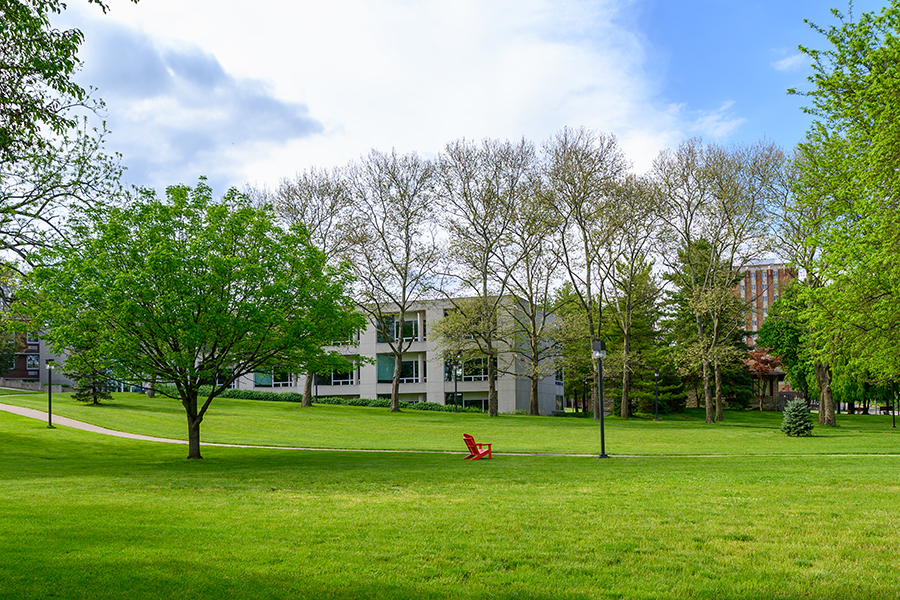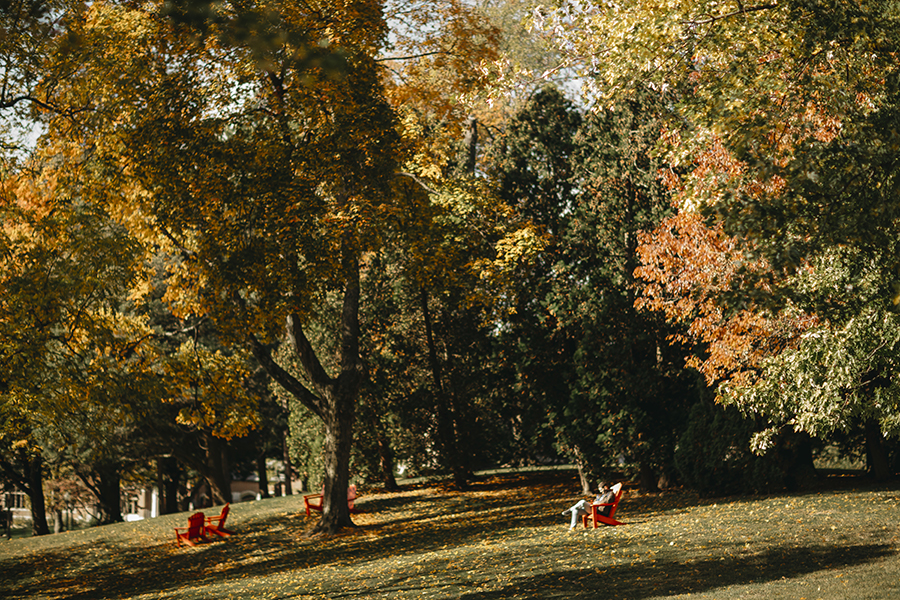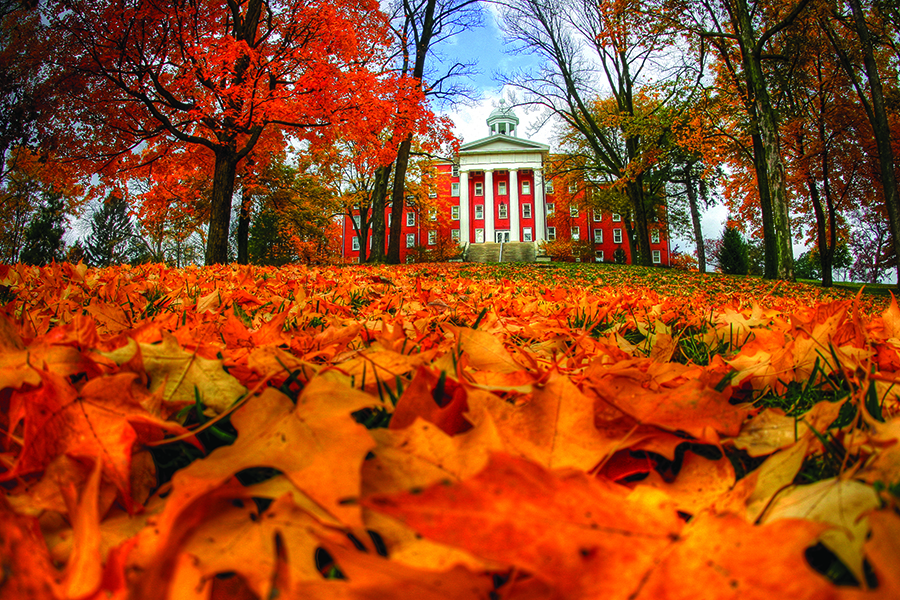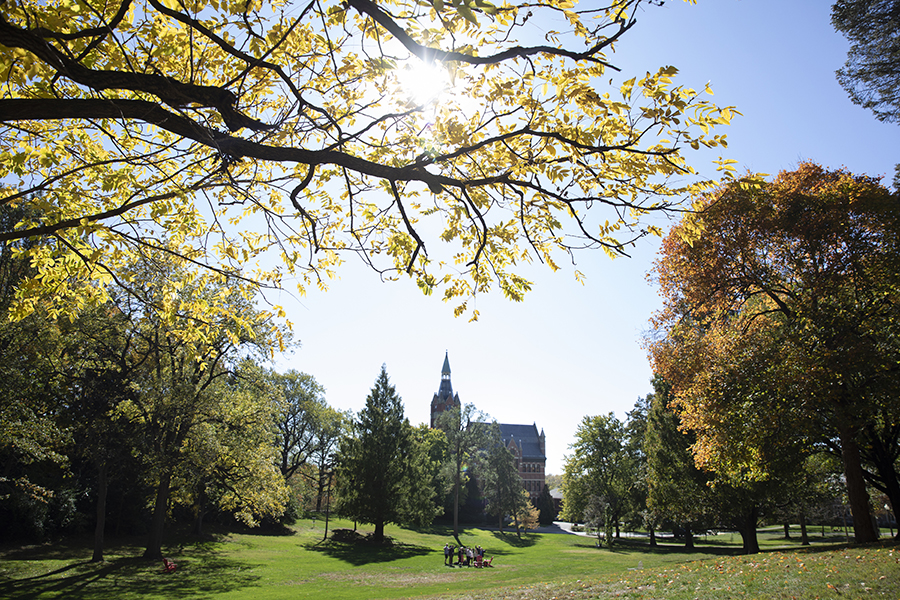The following story appeared in the Winter 1999 issue.
As sylvan glades go, few college campuses can match Wittenberg’s visual splendor.
During the past 30 years, one of campus’ finest natural resources has only grown richer and more beautiful, thanks to the dedication of its resident botanist, Ronald deLanglade, professor of biology.
When deLanglade joined the faculty 32 years ago, the campus contained a forest of maples, oaks, ash and a few walnut trees — lush but rather ordinary. Two decades ago one of those great walnuts threatened to drop limbs on the passers-by below.
Administrators wanted to remove it, but deLanglade and fellow faculty colleague Louis Laux stepped in and persuaded them to spend the $2,000 earned from selling the walnut’s wood on replenishing the campus’ trees.
Today, the campus is in the midst of a kind of golden age of its wooded resources. The physical campus has never been more varied and diverse, and in the heart of campus stands a healthy mix of 133 species of trees.

To the unpracticed eye, it looks beautiful. But a closer look reveals a rich kaleidoscope of botanical life. “Some of these trees I consider my trees,” deLanglade said.
And why not? Starting in the late 1970s, he began to take a personal interest in the campus’ tree population. deLanglade would personally select young trees from the nursery and then map out the spots where they would be planted.
That effort started to be taken seriously when an enrollment consultant studying the admissions environment reported that Wittenberg’s beautiful wooded campus was one of top reasons students decided to attend Wittenberg.
deLanglade then decided to use this finding not only to make campus more beautiful, but also to extend his biology classroom over acres and acres.
To help create his living laboratory, he and student Nissa Karr produced the first map of campus tree varieties during the 1985-86 academic year. “I use the map in my classes. I have students memorize by sight all of the deciduous trees and conifers on campus. Then I take the students around campus, and we have a field test.” Majors must do this, but non-majors have it only a little easier.
deLanglade requires them to compile a leaf collection of 75 campus species. He wants to educate and encourage students to look across campus and see not a lovely wooded scene but a whole tapestry of diversity.
He hopes students will liberally apply this skill throughout their lives. “To me it’s like art,” deLanglade said.
“You can look at a picture and see just a picture, but if you know something about the artist and the history of when it was created, you gain a fuller appreciation of its value.”

He said he hates to see students walking around wearing headsets and noticing none of the rich beauty in their lives. His botany classes and his work on the campus landscape both aim to make students more aware of their surroundings.
“Hopefully they will carry that appreciation throughout their lives.”
Mark Goheen certainly has an appreciation.
The superintendent of grounds, Goheen is responsible for planting, fertilizing, watering, raking, trimming, pruning, and understanding the needs of all of those different plant species.
“He and his crew do an outstanding job with limited resources,” deLanglade said.
Sometimes it is a scramble to keep 70 acres healthy, as it was during the drought in 1988, when the groundskeepers had to stretch a 4-inch water line from the fire hydrants all the way across the center of campus at night to keep the trees from going into shock.
Goheen loves the older trees on campus, such as the stately oaks in front of Myers Hall. He also favors the red maples because of the fiery color they display in the fall. For years, the university used to plant three trees for every one that had to be removed.

Today the campus brims with specimens, so the University has scaled back on plantings. “We have enough trees,” Goheen said. “Now we just have to take care of what we’ve got.” The exception is evergreens, which Goheen would like to plant more of so the campus has more color year-round.
Between the two of them, Goheen and deLanglade have helped create a campus that reflects more pride than ever.
Because plants of all ages and varieties are interspersed, the campus is less susceptible to losses because of disease, accident or aging.
deLanglade said it gives him a thrill when he passes Recitation Hall today and sees the earliest trees he planted now towering 30 feet above him.

He also takes pleasure in the fact that visitors to campus today can find rare or unusual species, such as the incense cedars, the English oak and the Japanese contorted willow.
Wittenberg also has a dawn redwood, which only naturally grows in the middle of China, according to deLanglade. Then there is the bald redwood, which is found only in the American south, no closer than southern Illinois.
When deLanglade retires down the road, he hopes to continue enriching Wittenberg’s botanical landscape. Instead of the traditional wooden chair normally presented to retirees, deLanglade plans to request that a tree be planted on campus in his name. He already has it picked out.
He wants a triple-colored European beech tree, which has purple, white, and green leaves. “It’s just a neat tree — and very rare,” he said.



